2009 Honda Fit Sport automatic w/Nav
One of the big success stories in Honda's lineup recently has been its smallest car (in the U.S. market at least) the Fit. Since its U.S. debut two years ago, Honda has been moving Fits out the door as fast they can build them. That pace really accelerated in 2008 as gas prices topped $4 per gallon during the spring and summer and most of the popular hybrid models were sold out. With October being the most dismal sales month in memory for virtually every automaker, even Honda saw its sales tank. The lone exception was the Fit.
As summer ended and the kids went back to school, the all-new second generation Fit began to arrive in U.S. showrooms just in time for the implosion on Wall Street. Nonetheless, so far the new Fit has done well in the market despite the increasing difficulty for customers to get car loans. In an absolutely miserable October, the Fit was the only Honda brand vehicle to show a year-over-year sales gain with a 28 percent jump compared to 2007. When we first drove the new Fit back in August, we came away very impressed with its fun to drive qualities. Now it's time to find out what it's like to live with on a day-to-day basis. The answer lies after the jump.
Photos Copyright ©2008 Sam Abuelsamid / Weblogs, Inc.
When the first-generation Fit arrived in the U.S. two years ago it was widely praised for its spirited handling and tremendously useful packaging. While the Fit is certainly small by modern American market standards its actually about the same overall length as the original 1976 Honda Accord. The Fit however, is taller and wider than that first Accord with a lot more room inside.
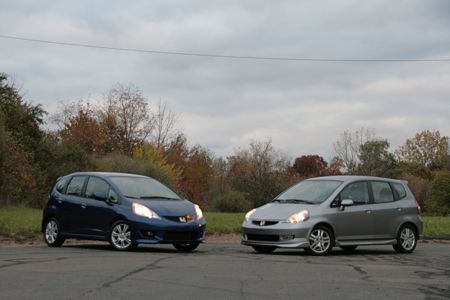
The new Fit styling is a clear evolution from the original but with what might be described as a slightly more grown up look. Where the original looked a little rounder and softer, the new car is sharper and a bit bolder looking. It's as if the Fit had spent some time in the gym working on its muscle tone. It's not all bulked up like a body builder, but the whole car looks a bit more buff. The test car we got from Honda was a loaded Fit Sport with the navigation system and a five-speed automatic transmission.
The sport package substitutes 16" alloy wheels in place of the steel wheels with plastic covers on the base model. Lower extensions to the front and rear fascias and rocker panels visually lower the Fit and certainly make it look sportier even if they don't have any real functional effect. Finally fog-lights and a rear spoiler complete the look. On the inside, the Sport gets an upgraded stereo with a USB audio input that provides control of iPods and other devices right from the head unit. Automatic transmission-equipped Fits also get a set of steering wheel mounted paddle shifters that allow manual control of the gear box.
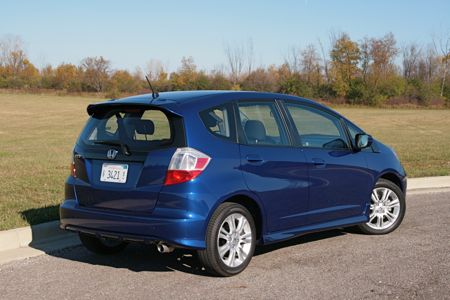
The Fit seats are only available with cloth coverings, no vinyl or animal hides are available. The seats are well shaped and have firm padding but they aren't perfect. The lower cushions, as is all too common these days, are too short with insufficient thigh support. The seat back cushions do provide good lower back and lateral support to hold you in place while cornering. One feature now included that the 2008 model lacked is a center armrest for the driver. Passengers in the back seat will be very pleasantly surprised at the amount of space available in the back seat. Because the Fit is relatively tall, the lower cushions are mounted up off the floor meaning your hips are even with your knees. Of course since this is a small car, even though there are three seat belts in the second row, only very skinny adults or children will fit three across. Two typically-sized American adults will find they have more than sufficient space to be comfortable.
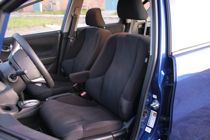
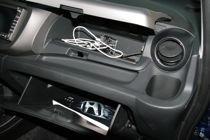
With rear occupants in place there is an impressive 20.6 cu. ft of cargo space between the seat back and hatch. In the absence of one or more rear passengers, the rear of the Fit provides several option for carrying cargo. As with many other hatchbacks, the rear seats fold down with a 60/40 split giving a flat load floor. The rear head rests slide down so that they don't have to be removed to fold the seats down. The unique aspect of the Fit is what Honda calls Magic-Seats. The lower cushions for the back seat can also fold up against the seat back giving a cargo space across the car with four feet from floor to ceiling.
From the pilot seat, the driver will find excellent sight-lines in all directions thanks to relatively narrow pillars and lots of glass. The steering wheel provides a nice thick rim to hang on to while maneuvering the Fit. Drivers will find that the Fit has better steering feel and feedback than many much more expensive "performance" cars including at least a couple of corporate cousins from the Acura lineup. Driving down a country road, drivers will love the precision of the directional control and with the automatic Fit Sport, they can even manage the gear selection process without releasing the wheel. When manually selecting gears, the shifts are responsive and smooth in either auto or manual modes.
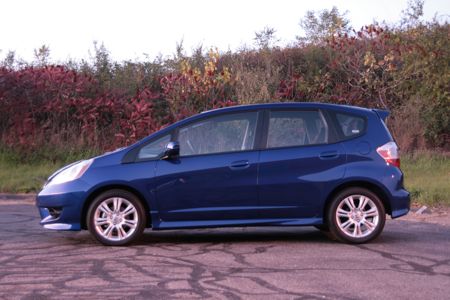
The new Fit offers plenty of places to stash a drink bottle or cup, especially in the front. Each of the four doors has a bottle holder with four more cup holders in the front, one at each end of the dash board and two more ahead of the shifter. For the first time, a factory navigation system is available in the Fit and unlike other Honda/Acura systems this one uses a touch screen. On the passenger side, there are storage compartments both above and below. The upper storage unit contains the USB port for plugging in audio devices. The gauges are clear and legible and, like other contemporary Hondas, have a pleasant blue glow at night.
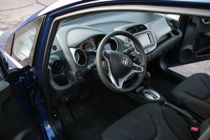
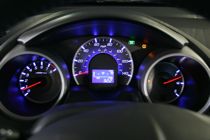
Honda makes some of the best engines on the market with their four cylinders being particularly smooth and relatively powerful. Unfortunately, the one down side of Honda fours is that they get their power from lots of revs. They all tend to be relatively weak on torque at low speeds and the 1.5L engine in the Fit is no exception. The 2009 retains the same displacement as the '08 model while the power went from 109 to 117 hp. Torque however only went from 105 to 106 lb-ft at a peak of 4,800 rpm. My daughter has a 2008 Fit Sport automatic and off the line it actually feels quicker than the newer car.
The new Fit accelerates smoothly enough although personally I'd prefer a little more readily available low end torque. When I drove the manual transmission Fit in August I commented that a small diesel like the one in the MINI Cooper D would be a perfect fit in the Fit. Another option would be a smaller displacement turbocharged and direct injected gas engine of say 1.0-1.2L. That could yield similar power of 110-115 hp with better torque and perhaps better mileage too.
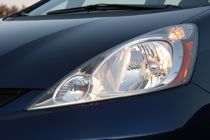
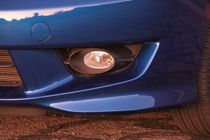
Speaking of mileage, that's one of big reasons for buying such a car and the Fit does very well. The base Fit with an automatic is rated at 28/35 mpg while the Sport gets a 27/33 score from the EPA. In a week of mostly around town driving we managed a quite respectable 32 mpg. For those who like to explore roads with frequent directional changes, the Fit retains all the wonderful qualities of its predecessor with precise handling and decent grip. The taller stance means the body rolls a bit more around corners than a MINI, but not alarmingly so. The body structure is remarkably tight and solid with no rattles or hollow sounds when closing the doors.
At $15,220 (including destination charges) the base Fit slots into the middle of the segment, above the Nissan Versa and slightly below the Scion xD and Corolla. It has more personality and driving pleasure than any of those competitors and is head and shoulders above the likes of the Chevy Aveo. At $19,430 delivered, the Fit Sport with Navigation and automatic is a bit on the steep side. The sweet spot is probably the non-nav Fit Sport at $17,580. Skip the $2,000 nav system and just got a $150 Navigon or Tom-Tom that you can take with you.
When we tried out the Civic hybrid a few months ago we got 37 mpg. The base price of the Civic hybrid is $6,640 more than a Fit Sport automatic without the Nav system. At the $4 per gallon that we were paying last summer, the extra 5 mpg from the hybrid would save you $204 per year if you drive 12,000 miles annually. If you accumulate fewer miles or the price of gas stays closer to the current $2, the savings will be even smaller. The Fit has comparable interior room to the Civic sedan and handles far better than the hybrid sedan. The hatchback and the "Magic Seat" also provide greater utility. At that $4 gas price the purchase price difference would buy you over 53,000 miles worth of gas. If it were my money, I'd take the slightly lower mileage and pocket the difference, especially in these days of hard credit.
If only it had some low end torque and a seat with a bit more thigh support, this might well be the perfect small car. Even as it is, it's fine little car with lots of room for four adults.
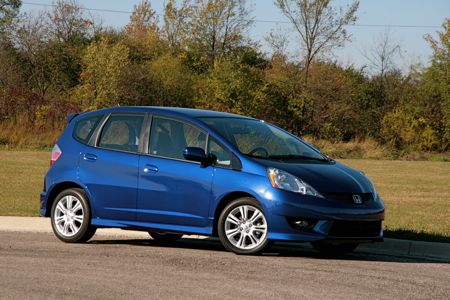
Photos Copyright ©2008 Sam Abuelsamid / Weblogs, Inc.
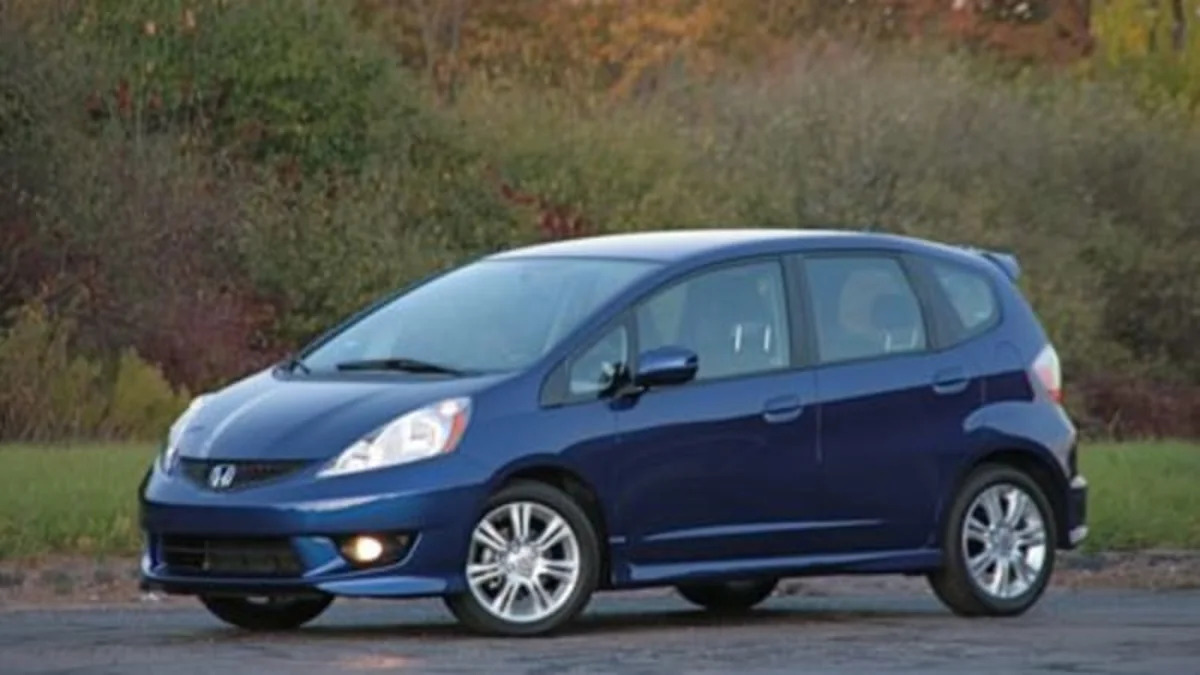

Sign in to post
Please sign in to leave a comment.
Continue